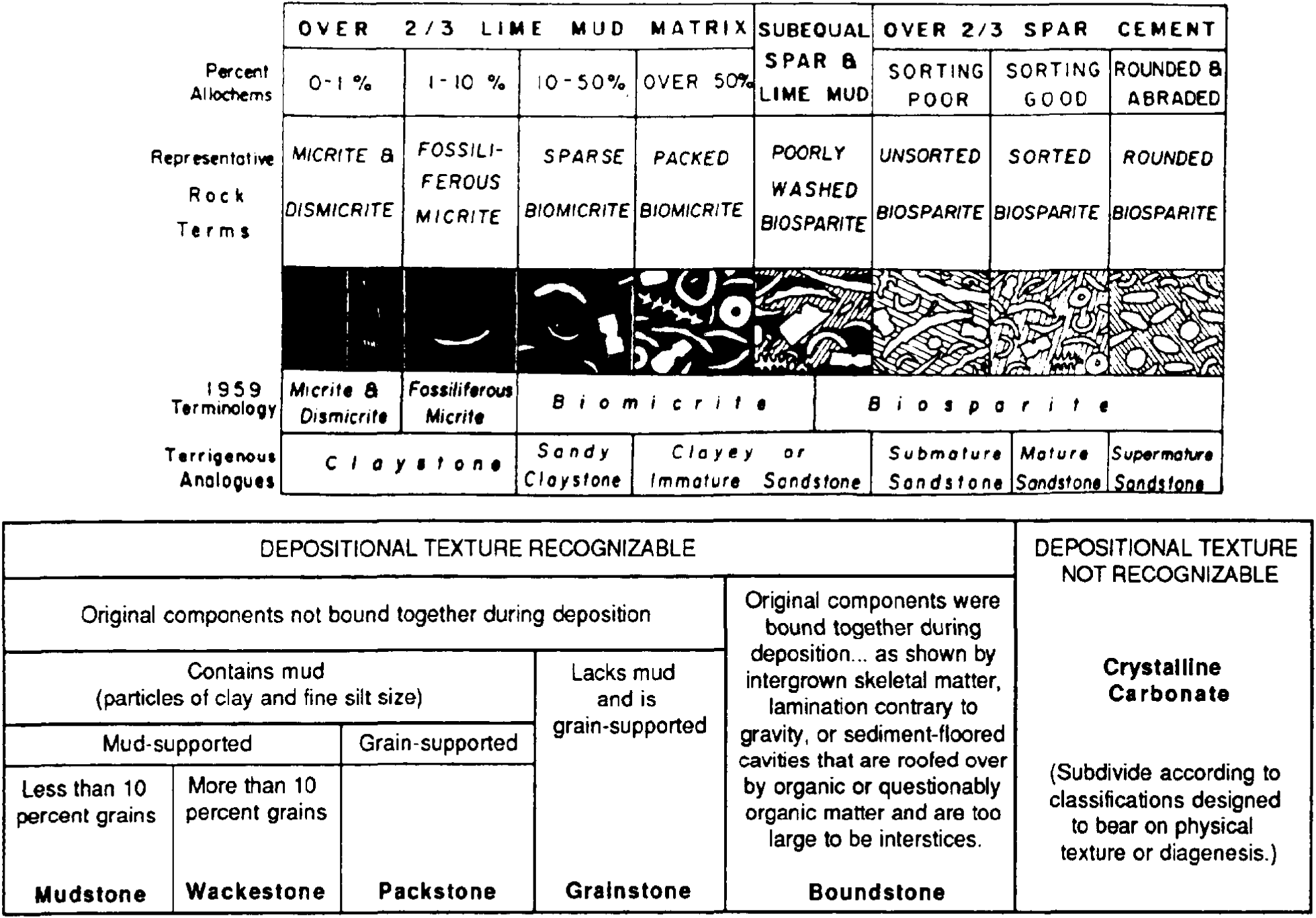Difference between revisions of "Carbonate classification"
Jump to navigation
Jump to search
Cwhitehurst (talk | contribs) |
Cwhitehurst (talk | contribs) |
||
| Line 1: | Line 1: | ||
| − | [[ | + | The two commonest classification systems for [[carbonate]] rocks are those of Folk<ref name=pt05r56>Folk, R. L., 1959, [http://archives.datapages.com/data/bulletns/1957-60/data/pg/0043/0001/0000/0001.htm Practical petrographic classification of limestones]: AAPG Bulletin, v. 43, p. 1–38.</ref> and Dunham.<ref name=pt05r50>Dunham, R. J., 1962, [http://archives.datapages.com/data/specpubs/carbona2/data/a038/a038/0001/0100/0108.htm Classification of carbonate rocks according to depositional texture], in Ham, W. E., ed., Classification of Carbonate Rocks: AAPG Memoir 1, p. 108–121.</ref> Folk's classification uses combination forms of words describing the grains and words describing the cements. Dunham's classification is based on the depositional fabric of the rock. |
| − | + | [[File:Thin-section-analysis fig2.png|frame|{{figure number|1}}Folk<ref name=pt05r56>Folk, R. L., 1959, [http://archives.datapages.com/data/bulletns/1957-60/data/pg/0043/0001/0000/0001.htm Practical petrographic classification of limestones]: AAPG Bulletin, v. 43, p. 1–38.</ref> and Dunham<ref name=pt05r50>Dunham, R. J., 1962, [http://archives.datapages.com/data/specpubs/carbona2/data/a038/a038/0001/0100/0108.htm Classification of carbonate rocks according to depositional texture], in Ham, W. E., ed., Classification of Carbonate Rocks: AAPG Memoir 1, p. 108–121.</ref> classifications.]] | |
==References== | ==References== | ||
Revision as of 16:49, 19 May 2014
The two commonest classification systems for carbonate rocks are those of Folk[1] and Dunham.[2] Folk's classification uses combination forms of words describing the grains and words describing the cements. Dunham's classification is based on the depositional fabric of the rock.
References
- ↑ 1.0 1.1 Folk, R. L., 1959, Practical petrographic classification of limestones: AAPG Bulletin, v. 43, p. 1–38.
- ↑ 2.0 2.1 Dunham, R. J., 1962, Classification of carbonate rocks according to depositional texture, in Ham, W. E., ed., Classification of Carbonate Rocks: AAPG Memoir 1, p. 108–121.
This article is a stub. You can help AAPG Wiki by expanding it.
